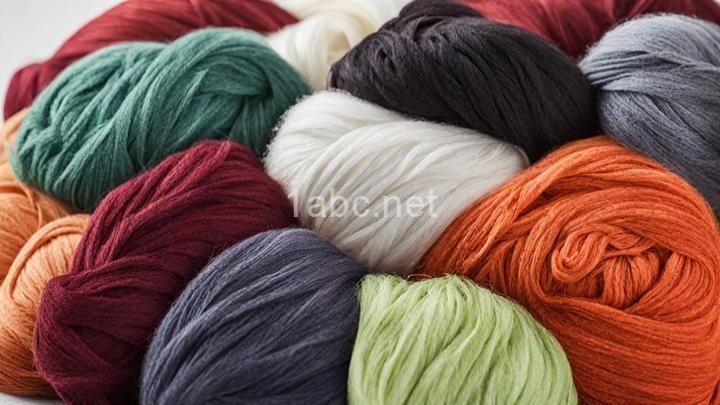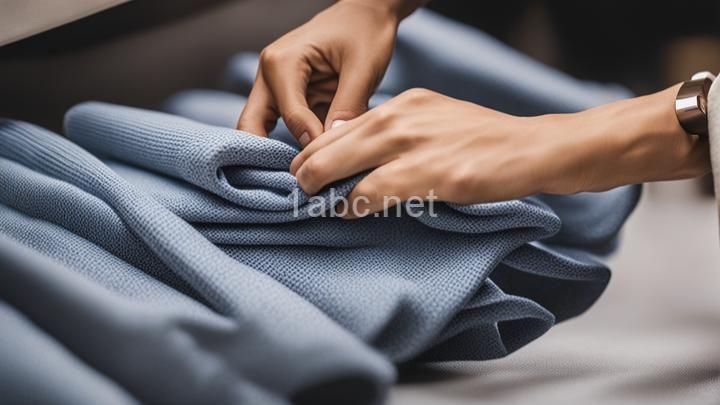From Dyeing to Drying: Best Practices for Preserving Colorfastness

Introduction:
Welcome to the blog post, dear readers! Today, we're diving into the fascinating world of colorfastness and how it plays a crucial role in preserving the vibrancy and longevity of dyed fabrics. So, grab your favorite cup of tea and let's embark on this colorful journey together!
I. Understanding Colorfastness:
Colorfastness is a term that may sound intimidating, but it's actually quite simple. It refers to the ability of a fabric to retain its color when exposed to various factors such as washing, sunlight, and friction. Why is this important, you ask? Well, imagine spending hours creating the perfect hue on your fabric, only to have it fade away after a couple of washes. That's where colorfastness comes in, ensuring that your hard work and creativity are preserved for years to come.
To put it into perspective, think about your favorite pair of jeans. You've worn them countless times, yet their color remains as vibrant as the day you bought them. That's the magic of colorfastness!
II. Preparing for Dyeing:
Before we jump into the enchanting process of dyeing, it's essential to lay the groundwork for success. The first step is selecting the right fabric. Some fabrics, like natural fibers such as cotton or silk, have a higher affinity for dyes and tend to hold onto colors better. On the other hand, synthetic fibers like polyester may require additional steps to enhance color retention.
To ensure optimal colorfastness, it's crucial to pre-treat your fabric before dyeing. This involves washing the fabric to remove any finishes or sizing agents that may interfere with dye absorption. Remember, a clean slate is key to achieving vibrant and long-lasting colors. Additionally, pay attention to the pH levels during the dyeing process, as it can impact colorfastness. pH-neutral environments are generally recommended for optimal results.
III. Choosing the Right Dyes:
Now that you've prepared your fabric, let's dive into the world of dyes. There are various types of dyes available, each with its own unique properties. Natural fibers, synthetic fibers, and blends each have specific dyes that work best for them.
When it comes to colorfastness, some dyes are known for their exceptional performance. Fiber-reactive dyes, for example, are perfect for natural fibers as they form a strong bond with the fabric, resulting in excellent color retention. Acid dyes, on the other hand, are specially designed for protein-based fibers like silk or wool. Their vibrant shades and resilience make them ideal for achieving long-lasting colorfastness.
IV. Proper Dyeing Techniques:
Now that you have your fabric and dyes ready, it's time to get creative! To ensure optimal colorfastness, follow these step-by-step instructions for dye preparation:
-
Water temperature: Use the recommended water temperature specified by the dye manufacturer. This ensures that the dye dissolves thoroughly and evenly.
-
Dye-to-fabric ratio: Follow the instructions provided with your dye to determine the correct amount of dye for your fabric. It's important not to overload the fabric with dye, as it can result in poor colorfastness.
-
Stirring techniques: Stir the dye and fabric mixture gently and consistently to ensure even dye distribution. This helps prevent blotchy or patchy results.
Remember, each dye type and fabric material might have its own specific considerations, so be sure to read and follow the instructions meticulously to achieve the best results.
V. Post-Dyeing Care:
Congratulations! You've successfully dyed your fabric and are eager to showcase your vibrant creation. But before you do, there are a few post-dyeing care steps to ensure optimal colorfastness.
First and foremost, rinse your fabric thoroughly to remove any excess dye. This step is crucial as it helps eliminate any loose dye particles that could potentially transfer onto other fabrics or fade over time. It's important to use cold water during rinsing to prevent color bleeding.
When it comes to washing your dyed fabric, it's vital to choose an appropriate detergent. Opt for a mild, color-safe detergent that won't compromise the colorfastness of your fabric. Avoid using harsh chemicals or bleach, as they can strip away the vibrant hues you've worked so hard to achieve.
If you're working with specific dyes, such as fiber-reactive or acid dyes, heat setting may be necessary to enhance colorfastness. Follow the dye manufacturer's instructions for heat setting, whether it involves ironing or tumble-drying the fabric.
VI. Drying Methods:
Ah, the drying process – the final touch to your colorfully dyed masterpiece! But beware, dear readers, as this stage can make or break your colorfastness. Different drying methods can have varying impacts on the vibrancy and longevity of your fabric's hues.
Air drying is generally considered the safest option for preserving colorfastness. It allows the fabric to dry naturally without subjecting it to excessive heat. If you choose to machine dry, be sure to select a low-heat setting to minimize any potential damage to the colors. Line drying, while a classic choice, can sometimes expose the fabric to direct sunlight, which may lead to color fading over time. If you opt for line drying, try to find a shaded area or cover the fabric to protect it from direct sunlight.
Delicate fabrics or dyes that require extra care, such as silk or certain specialty dyes, may benefit from alternative drying techniques. For silk, for instance, gently roll the fabric in a towel to remove excess moisture before air drying. This ensures a gentle and controlled drying process, preserving the fabric's colorfastness.
VII. Long-Term Colorfastness Maintenance:
Preserving colorfastness goes beyond the dyeing and drying process. It's a commitment to long-term fabric care and storage. Here are a few tips to help you maintain vibrant colors for years to come:
-
Use color-safe laundry products: When washing your dyed fabrics, opt for detergents specifically formulated for colored garments. These products are designed to protect and enhance colorfastness.
-
Avoid harsh chemicals: Steer clear of bleach or harsh cleaning agents that can strip away the colors. Instead, choose mild and gentle cleaning alternatives.
-
Follow garment care labels: Garment care labels often provide specific instructions for maintaining colorfastness. Take the time to read and follow these instructions to ensure optimal results.
Conclusion:
Colorfastness is the unsung hero of the dyeing world, ensuring that your vibrant creations withstand the test of time. By understanding the importance of colorfastness, preparing your fabric correctly, choosing the right dyes, employing proper dyeing techniques, caring for your fabric post-dyeing, and utilizing suitable drying methods, you can achieve stunning and long-lasting results.
Remember, dear readers, preserving colorfastness is an ongoing commitment. By incorporating these best practices into your fabric care routine, you can enjoy the vibrant beauty of your dyed creations for years to come. Now, it's your turn! We'd love to hear about your experiences with preserving colorfastness or answer any questions you may have. Share your thoughts in the comments below or reach out to us directly. Happy dyeing and preserving, folks!
FREQUENTLY ASKED QUESTIONS
What is colorfastness and why is it important?
Colorfastness refers to the ability of a fabric or material to retain its color when exposed to various external factors such as washing, sunlight, or rubbing. It is an important quality to consider when purchasing or caring for textiles, as it ensures that the colors remain vibrant and true over time.Colorfastness is crucial because it directly affects the longevity and appearance of the fabric. If a fabric is not colorfast, the colors may fade or bleed, resulting in a dull or uneven appearance. This can be particularly problematic for items such as clothing, upholstery, or curtains, where maintaining the original color is desired.
Imagine buying a vibrant red shirt that quickly fades to a pale pink after a few washes. Not only does it look less appealing, but it also gives the impression of poor quality. Colorfastness ensures that your favorite garments and textiles stay true to their original hues, enhancing their overall aesthetic appeal.
Additionally, colorfastness is important for practical reasons. For instance, if a fabric is not colorfast, the colors may transfer onto other surfaces, such as furniture or skin. This can be frustrating and potentially ruin other items or cause skin irritation. By choosing colorfast materials, you can avoid these inconveniences and maintain a clean and consistent look.
To ensure colorfastness, it is recommended to follow the care instructions provided by the manufacturer. These instructions often include specific washing temperatures, detergents, and drying methods that help preserve the fabric's color. By following these guidelines, you can extend the lifespan of your textiles and enjoy their vibrant colors for a longer period.
In summary, colorfastness is the ability of a fabric to retain its color despite exposure to external factors. It is important because it guarantees the longevity and appearance of textiles, preventing color fading or bleeding. By choosing colorfast materials and following proper care instructions, you can enjoy vibrant and true colors in your fabrics for a longer time.
How can I ensure colorfastness when dyeing fabrics?
To ensure colorfastness when dyeing fabrics, there are a few steps you can take. First, it's crucial to wash the fabric thoroughly before dyeing to remove any dirt or chemicals that may affect the dye's adherence. Next, choose a high-quality fabric dye that is specifically designed for the type of fabric you are working with. Following the instructions provided by the dye manufacturer is essential to achieve the best results.Once you've applied the dye, it's important to allow the fabric to set for the recommended amount of time. This allows the dye to penetrate the fabric fibers and bond securely. After the recommended setting time, rinse the fabric thoroughly with cold water to remove any excess dye. This step helps to eliminate any loose particles that could cause color bleeding.
To further enhance colorfastness, you can add a fabric fixative or color fixative to the rinse water. These products help to lock in the color and prevent it from fading or bleeding during subsequent washes. Be sure to follow the instructions on the fixative product carefully.
When it comes to washing your dyed fabric, always opt for a gentle cycle with cold water. Avoid using harsh detergents or bleach, as these can strip away the dye. Instead, choose a mild detergent specifically formulated for colored fabrics. It's also a good idea to wash your dyed fabric separately from other garments to prevent any potential color transfer.
Lastly, when drying your fabric, avoid direct sunlight as it can cause fading. Instead, air dry the fabric or use a low-heat setting on your dryer.
By following these steps, you can help ensure that the color of your dyed fabric remains vibrant and long-lasting.
Are there any specific washing instructions to maintain colorfastness?
Yes, there are specific washing instructions you can follow to maintain colorfastness in your clothes. First, always separate your laundry into different piles based on color. This will prevent any bleeding or transfer of color between garments. Next, turn your clothes inside out before washing. This will help protect the outer layer of fabric from rubbing against other items and potentially fading or losing color.
When it comes to selecting the right detergent, opt for a mild and color-safe one. Harsh detergents can strip away color and cause fading.
Additionally, it's important to wash your colored clothes in cold water. Hot water can cause the dyes to fade faster.
Lastly, avoid using bleach or any harsh chemicals on colored garments. Instead, consider using color-safe bleach alternatives or stain removers specifically designed for colored fabrics.
By following these washing instructions, you can help maintain the colorfastness of your clothes and keep them looking vibrant for longer.
How can I protect colorfastness when exposing dyed fabrics to sunlight?
To protect colorfastness when exposing dyed fabrics to sunlight, there are a few steps you can take. First, consider using a fabric with a high colorfastness rating, as some dyes are more resistant to fading than others. Look for fabrics that are labeled as "UV resistant" or "fade-resistant" for added protection.Second, minimize direct exposure to sunlight by using window coverings or blinds to block out the sun's rays during the brightest parts of the day. This will help reduce the amount of UV radiation that reaches your fabrics.
Additionally, you can apply a UV protectant spray or fabric treatment to your dyed fabrics. These products create a barrier that helps to shield the fabric from the sun's harmful rays. Be sure to follow the manufacturer's instructions when using these treatments.
It's also a good idea to avoid hanging dyed fabrics in direct sunlight for long periods of time. If possible, store them in a cool, dark place when not in use.
Regular maintenance is key to preserving colorfastness as well. Follow the care instructions provided by the fabric manufacturer, which may include washing in cold water, using mild detergents, and avoiding harsh chemicals or bleach.
By taking these precautions, you can help protect the colorfastness of your dyed fabrics and extend their lifespan.

